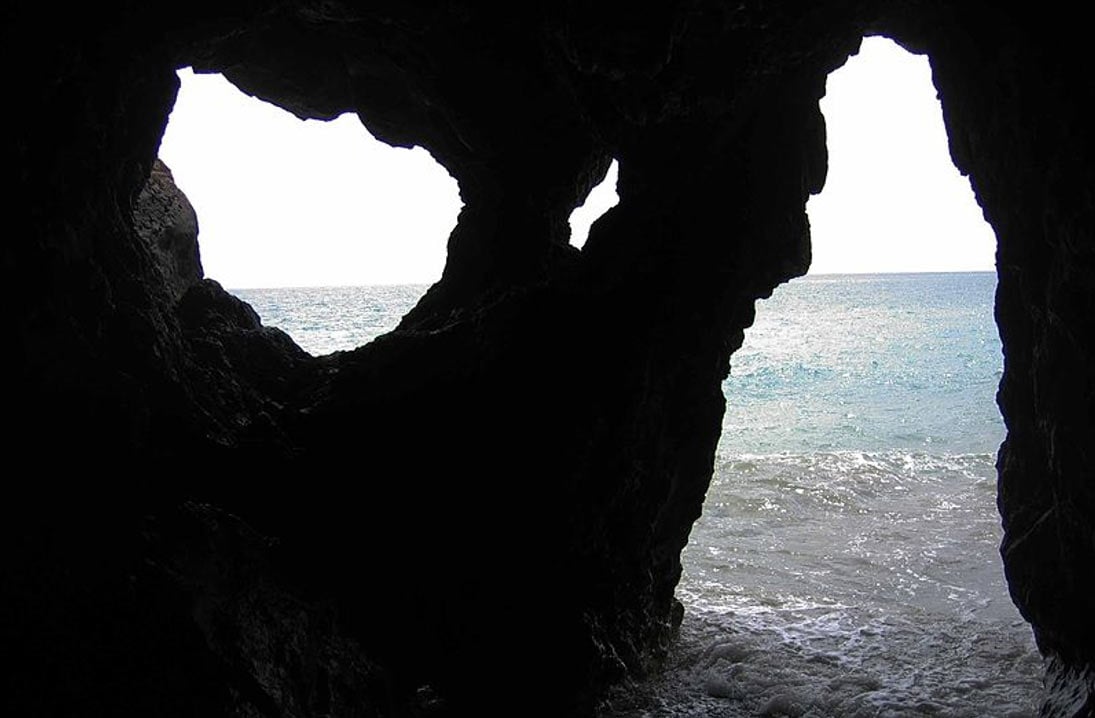Neanderthal child remains found in Catalonia Cave
Archaeologists in Catalonia have discovered the skeletal remains of a 5-year-old Neanderthal child in the Cova del Gegant (Cove of the Giant) in Sitges, Barcelona. The discovery represents the first Neanderthal remains from Catalonia found in modern excavations.
Past Horizons reports that the finding was made by an interdisciplinary scientific team, coordinated by the University of Barcelona, who uncovered a mandible, a humerus, and stone tools, in a well-dated section of the Cova del Gegant corresponding to 55,000 years ago.
“The preserved morphology of the mandible, particularly in the region of the mental foramen, clearly aligns it with the Neanderthals, making the Cova del Gegant the only known site in Catalonia documenting diagnostic human skeletal remains in association with Middle Paleolithic stone tools,” report the study authors in the Journal of Human Evolution.
- Neanderthals Buried Their Dead in Ancient Ritual
- Grisly discovery in Spain reveals Neanderthal family was butchered and eaten

The Cova del Gegant in Sitges (fr.wikiloc.com)
The Cova del Gegant is located on the beachfront and measures 20 meters in length. It contains several galleries with sediments that are between 40,000 and 60,000 years old. The site has provided large vertebrate remains, stone tools, and Neanderthal remains, including the jaw of a Neanderthal adolescent found in 2005, a tooth belonging to separate individual, and now the latest remains of the juvenile. Up until now, the only other Neanderthal remains discovered in Catalonia were from much earlier excavations.

Researchers in the Cova del Gegant, in Sitges. Credit: University of Barcelona
“The mandible belongs to a juvenile estimated to be between 4.5 and 5 years old at death, and the humerus to a juvenile between 5 and 7 years old,” reports the University of Barcelona in a press release. “Remains spatial proximity at the site and their similar ages at death suggest they may represent a single individual of Homo neanderthalensis, the species that inhabited Europe and Western Asia between one hundred thousand and forty thousand years ago. However, it cannot be rejected that both bones belonged to two different juveniles.”

Fossils are 55,000 years old and they belong to a juvenile individual. Credit: University of Barcelona

The complete skeleton of a Neanderthal child discovered on the site of Marsal Roc, Dordogne in France (public domain)
The researchers explained that only a small number of stone tools have been found in the cave, and there is little evidence of impact on the animal remains, for example from butchering. This suggests that the Neanderthals only inhabited the cave for short periods of time. However, “the large amount of hyena remains indicates that the cave served as a hyena’s den”, concludes researcher Joan Daura.
A video (in Spanish) released by the University of Barcelona shows excavations and findings from the Cova del Gegant:
Catalonia's most modern Neanderthal has no secrets! from Barcelona Visió on Vimeo.
This represents an important new addition to the human fossil record from the Iberian Peninsula and joins the Bañolas mandible in documenting the course of human evolution in the northern Mediterranean region of Spain,
the researchers conclude.
Featured image: Cova del Gegant, Sitges, Barcelona (public domain)




















Comments
This would stand to reason were there no notable differences between the genomes of homo sapiens sapiens and the other human species you mentioned (aside from cro magnon). But there are notable differences, which have been cataloged and studied.
When it comes to science, you shouldn't make arguments based solely on belief ("and I say believe because I don’t have facts or data" - wtf), especially when you suggest rethinking the entire debate.
I think the entire debate about the different “species” of humans, from Neanderthal, to homo erectus, to Cromagnon, to homo sapiens, needs a big re-think.
I believe (and I say believe because I don’t have facts or data) that the differences among these various groups (including others like the Denisovan, represent different phenotypic expressions of the same human genome caused by disastrous local conditions.
Genetics does not have to play the whole role in phenotypic experssion, as recent advances in epigentics have shown, and as endocrinologists have known for a long time.
An imbalance in nutrition can cause major endocrinal changes, including common phenotypical expressions such as those called acromegaly, which affects millions of people, including the actor who played Jaws in the James Bond movies.
Many people today look like Neanderthal, at least to me. Look around and we have tremendous variation in our looks, from size, to skin color, to hair type, to body shape, etc. Humans come in a lot more forms than the idealized forms in text books.
Tom Carberry